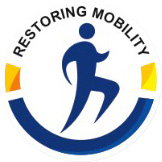Shoulder Arthroscopy
What is Arthroscopic Shoulder Surgery?
Arthroscopy is a method performed by orthopedic surgeons to evaluate, diagnose, and treat joint disorders. The shoulder surgeon will introduce a small camera called an arthroscope into your shoulder joint region during Arthroscopic Shoulder Surgery. This arthroscope projects images onto a TV screen, allowing your surgeon to direct small surgical tools for healing joint injury.
This standard approach has simplified and accelerated the diagnosis, treatment, and recovery after shoulder arthroscopic surgery. Arthroscopic Shoulder Surgery is 100% painless and reduces the amount of time it takes to recover.
When Is a Shoulder Arthroscopy Necessary?
Inflammation, which causes pain, stiffness, and swelling, as well as injury, overuse, and age-related wear and tear, are some of the reasons for shoulder discomfort. The following are the most often performed shoulder arthroscopic procedures:
- Ligament reconstruction
- Repair of the rotator cuff
- Removal or repair of the labrum
- Removal of a bone spur
- Surgical removal of inflammatory tissue
- Loose cartilage removal
- Recurrent shoulder dislocation repair
What Happens During an Arthroscopic Procedure?
Your surgeon will introduce fluid into your shoulder to expand and clear up the joint region so that the surgeon can view the components better. The arthroscope is then inserted via a tiny buttonhole incision. Once he has determined the source of the issue, he will utilize tiny devices to do procedures such as cutting, grabbing, shaving, suturing, and attempting to heal it.
Following the correction of the underlying issue, your surgeon will heal these incisions with stitches or little Band-Aid-like structures called Steri-Strips and cover the surgical site with a soft and large bandage.
What to Expect Following a Shoulder Arthroscopy?
In most cases, patients will be able to return home the same day as the procedure. Following your arthroscopic operation, you should consider the following:
- Shoulder Immobility: The degree of shoulder mobility is determined by the procedure used during surgery. However, your doctor will provide you with all of the essential guidelines, which you must strictly adhere to. Following the surgery, your shoulder may be immobilized with a sling, wrap, or brace.
- Incision Care: Keep the incision site clean and dry. Dressings for incisions are typically light and must be worn for a few days. The dressing may drain within the first 24 hours, but it normally stops. If the dressing on the wound is saturated with blood and the bleeding does not stop, see your orthopedic expert. Most of our orthopedic physicians suggest using an ice pack to the shoulder. Ice may help you manage your discomfort and swelling.
- Medications: These medications will alleviate your discomfort.
How long would it take to recover from arthroscopic shoulder surgery?
The amount of time it takes to recover completely depends on the extent of the damage in the joint that has to be repaired. An arthroscopic ACL reconstruction with MCL, meniscus, and LCL surgery takes much longer to recover than a diagnostic shoulder arthroscopy.
Is arthroscopic shoulder surgery painful?
Though arthroscopy recovery is shorter than open surgery, it may still take a few weeks for the shoulder joint to heal fully. However, you should expect some pain and discomfort for at least a week after your shoulder arthroscopic surgery.

